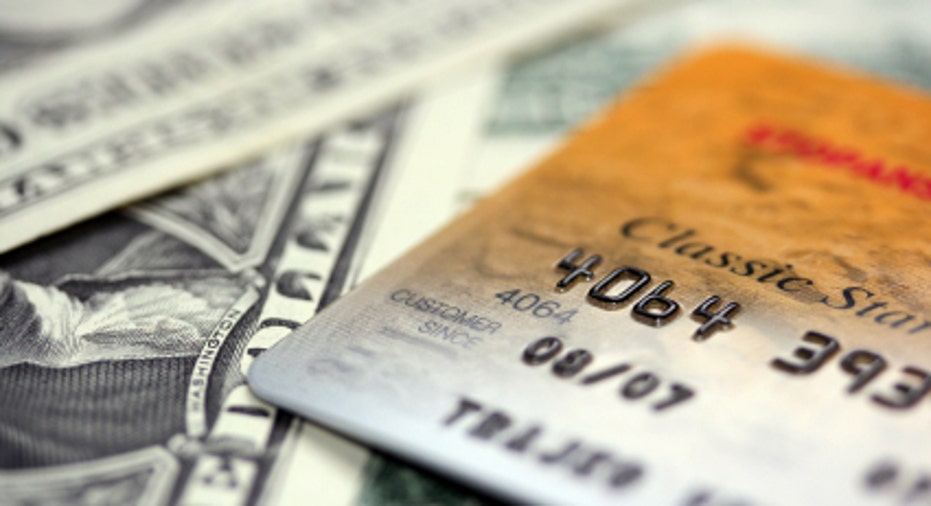The States With the Most Credit Card Debt

Alaskans have consistently carried high credit card balances for the past few years, possibly due to the high cost of living in the state. According to data from the Experian-Oliver Wyman Market Intelligence Reports, sorted using Experian’s IntelliView tool, only Alaska residents have carried an average credit card balance greater than $2,000 in the past three years, making it consistently the state with the most credit card debt.
Alaska is a bit of an outlier with its average debt of $2,299 per card in the second quarter of this year — the rest of the states carry an average balance between $1,366 and $1,817 — but even with high balances, Alaskans followed the national trend and reduced that balance over the past few years. Here’s how other states compare:
10. Alabama Average balance per credit card: $1,656 Change from Q2 2013: -$15 Change from Q2 2012: -$27
9. South Carolina Average balance per credit card: $1,664 Change from Q2 2013: -$17 Change from Q2 2012: -$37
8. New Mexico Average balance per credit card: $1,669 Change from Q2 2013: -$24 Change from Q2 2012: -$50
7. Georgia Average balance per credit card: $1,677 Change from Q2 2013: -$41 Change from Q2 2012: -$59
6. Colorado Average balance per credit card: $1,697 Change from Q2 2013: -$55 Change from Q2 2012: -$106
5. Washington Average balance per credit card: $1,741 Change from Q2 2013: -$41 Change from Q2 2012: -$61
4. Maryland Average balance per credit card: $1,750 Change from Q2 2013: -$20 Change from Q2 2012: -$17
3. District of Columbia Average balance per credit card: $1,793 Change from Q2 2013: +$3 Change from Q2 2012: +$26
2. Virginia Average balance per credit card: $1,817 Change from Q2 2013: -$9 Change from Q2 2012: -$4
1. Alaska Average balance per credit card: $2,299 Change from Q2 2013: -$55 Change from Q2 2012: -$21
The Missouri Economic Research and Information Center ranked cost of living by state as of the second quarter of 2014 (the same quarter used to pull the Experian data), and Alaska is the fourth-most expensive state to live in. From that perspective, the high average credit card balance makes sense, but Hawaii and Connecticut, the first and second-most expensive states, aren’t in the top 10 of average credit card balances. The District of Columbia is like Alaska: High cost of living (No. 3) and high average credit card debt (also No. 3).
t the same time, Alaskans don’t have exceptionally high credit limits. The average limit per card was $8,519 in the second quarter (second-highest after D.C.’s $8,838), but it was only the 12th-highest the year before. Looking at those numbers, Alaskans’ credit utilization averaged about 27% to D.C.’s 20% — they’re both decent numbers, but when it comes to credit scores, lower is better.
It’s worth noting that credit card balances aren’t necessarily incurring interest: It’s not a bad thing for a cardholder to have more than $2,000 on his or her card if he or she pays the balance in full each billing cycle. If you’re carrying a balance, though, that debt will grow with time, increasing your credit utilization as well. If you want to get out of credit card debt, prioritize paying the balance, and make sure to rein in your spending, as well.
Credit card use contributes to regular changes in your credit score, so it’s important to monitor your balances and scores to see how they interact. If you’re trying to make significant improvements to your score, reducing your credit utilization can be a good strategy. (One way is to make sure you keep your balance low relative to the limit. Another is to ask for higher credit limits, but keep your spending low.)
You can check your credit score for free on Credit.com, as well as get an idea of how much of your available credit you’re using.
More From Credit.com:How Secured Cards Can Help Build CreditTips for Paying Off Credit Card DebtHow to Get a Credit Card With Bad Credit



















